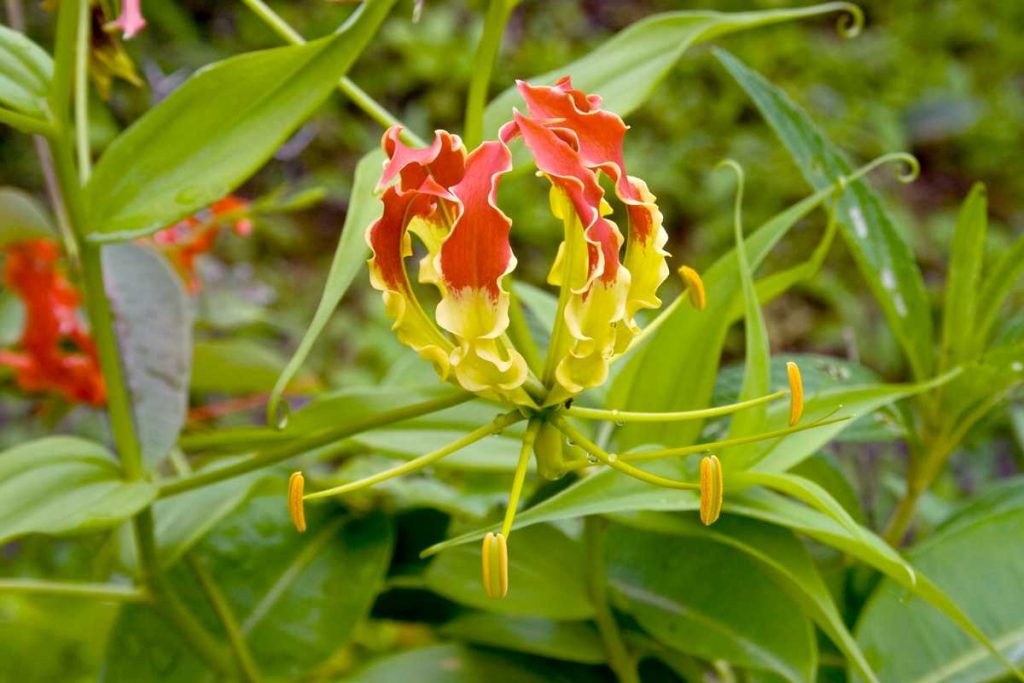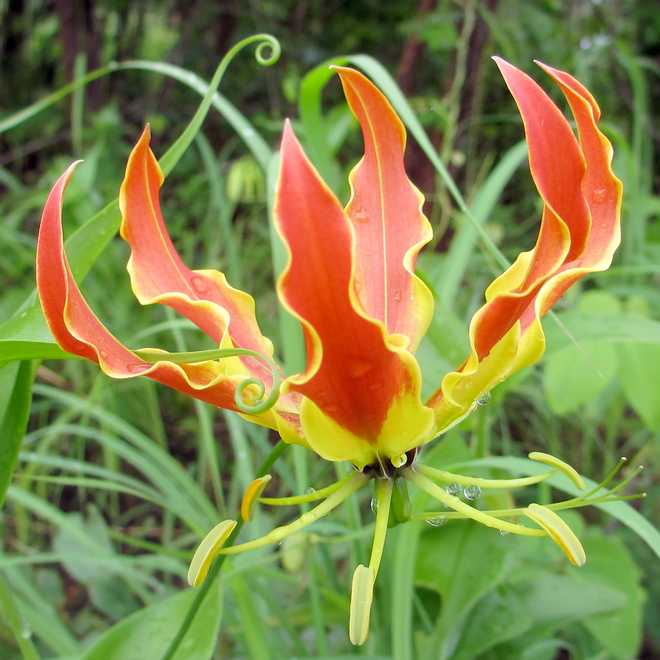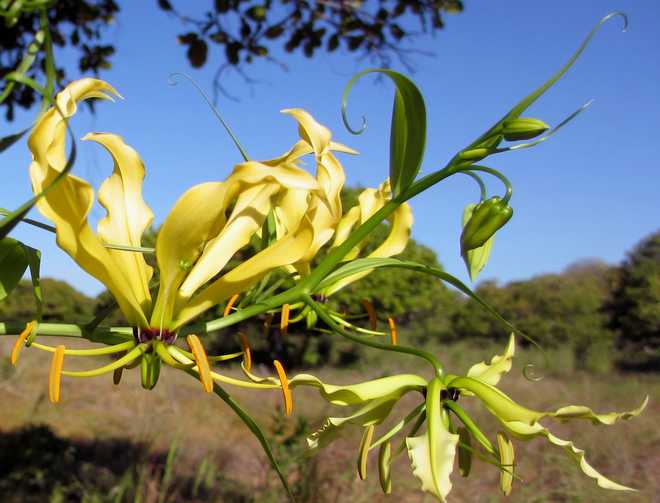
Beneath its exotic appearance, the Gloriosa superba or Malabar lily is a spectacular climbing perennial plant appreciated for greening a greenhouse or veranda in a humid atmosphere.
What there is to know :
Botanical name : Gloriosa superba Rothschildiana
Common name : Glorious, Malabar Lily, Superb Malabar, Glorious Lily
Family : Liliaceae or Colchicaceae
Height x spread: 1.50 m to 2 m in height
Foliage : Deciduous. The opposite leaves, 5 to 7 cm long, of a beautiful pure green, are shiny. Their end curiously forms a pretty tendril that allows this twining plant to cling to its support. This delicate foliage fears the burns of the sun and the dryness of the air.
Bulb : The rhizome of Gloriosa superba is fragile and brittle. It must be handled with care because the bud it contains is fragile.
Flowers : From June to October, the long and thin stems bear flowers 5 to 10 cm in diameter, with 6 upturned petals with protruding stamens reminiscent of a lily. Of a beautiful bright red color, these wavy petals are yellow on their edges at the base.
Exposure : In light sun or partial shade, sheltered from the wind. It is only possible to grow it outdoors in mild regions. Elsewhere, it is grown in a pot in a greenhouse or veranda to obtain significant flowering and to preserve this beautiful exotic climbing plant from one year to the next.
Soil : Light, drained soil. In pots, use a mixture of 1/3 good garden soil, 1/3 horticultural compost enriched with fertilizer and 1/3 sand.
Hardiness : Frostbite.
Plantation of Gloriosa superba
- Plant the Gloriosa bulb in early spring, in April.
- Install it flat, horizontal, or slightly tilted so that the bud is facing upwards.
- Bury it only 5 cm deep.
- As soon as you plant, install a support so that the tendrils that end the leaves can hang on their own.

Malabar Lily Care
The cultivation and maintenance of Gloriosa superba are delicate because this climbing tuberose is just as sensitive to dry air as to excess humidity at the level of its roots.
Watering : Water very regularly as soon as temperatures reach 18°C. The soil must remain cool, but not too cool either so as not to promote rotting of the rhizome due to excess humidity. Stop watering at the end of September to let the tubers enter their autumn rest period.
Fertilization : Apply 1 or 2 liquid fertilizers per month from May to early September. You can use a fertilizer for green plants to dilute in the irrigation water.
Conservation of the bulb in winter : In October and November, cut the faded flowers but let the foliage dry completely before cleaning the clump. If your Gloriosa is grown outdoors in an area where it freezes occasionally, dig up the bulb and store it in a dry place, in a box filled with sand or sawdust, at a temperature of 10 to 15°C.
In a cold region, if you grow your glorious lily in a pot, keep it protected from frost, in a greenhouse or in a cold veranda maintained at more than 5°C.
Ventilation : To avoid the risk of rotting flowers, foliage and roots, ventilate the greenhouse or veranda very regularly in summer.
Multiplication of Gloriosa superba
The Glorious Lily Gloriosa superba multiplies in spring, by sowing or by division of tubers with a bud.

Varieties of Malabar lilies
There is only one species of Glorious Lily but several varieties, the most cultivated of which is Rothschildiana : spectacular with its bright red petals.
Gloriosa superba simplex : its stems are shorter than Rothschildiana, with petals that are more orange than red.
Gloriosa superba Citrina : with lemon yellow flowers.
Did you know ?
- The flowers of Gloriosa superba resemble those of the lily. This climbing plant is also called Malabar Lily and, depending on the classification, it is in the Liliaceae family or in the Colchicaceae family.
- Because like colchicum, the bulb and stems are toxic if ingested because they contain colchicine.
- Gloriosa superba is a plant offering very beautiful flowers in bouquets. Cut a few brightly colored ones: they easily last a few days.
